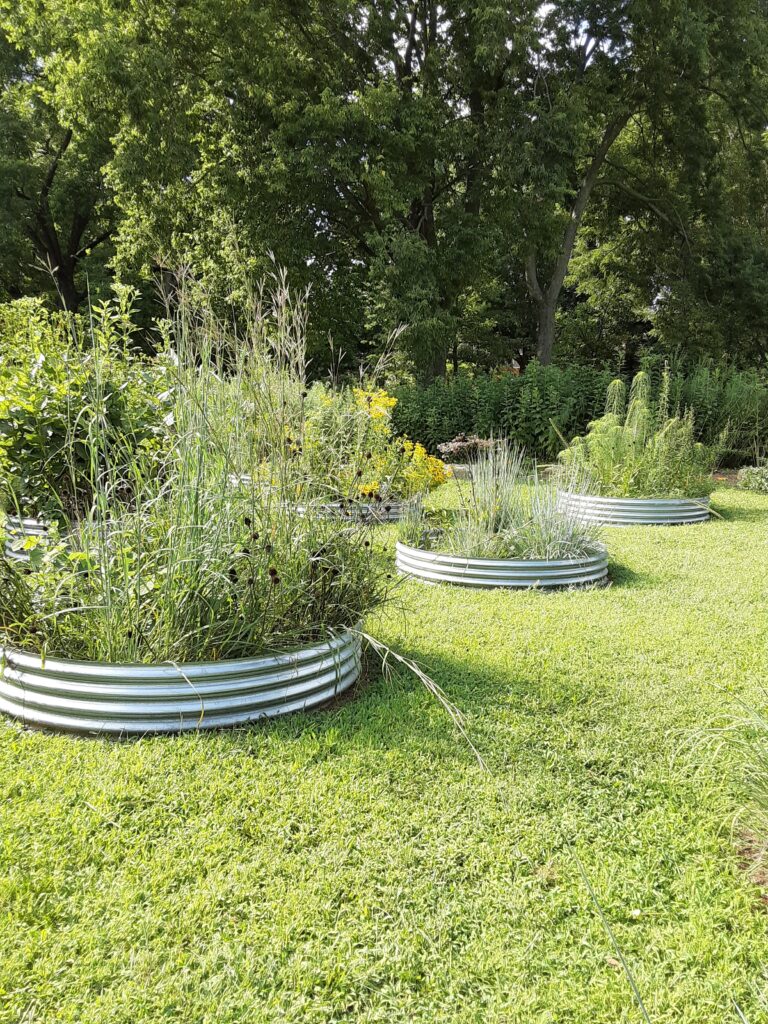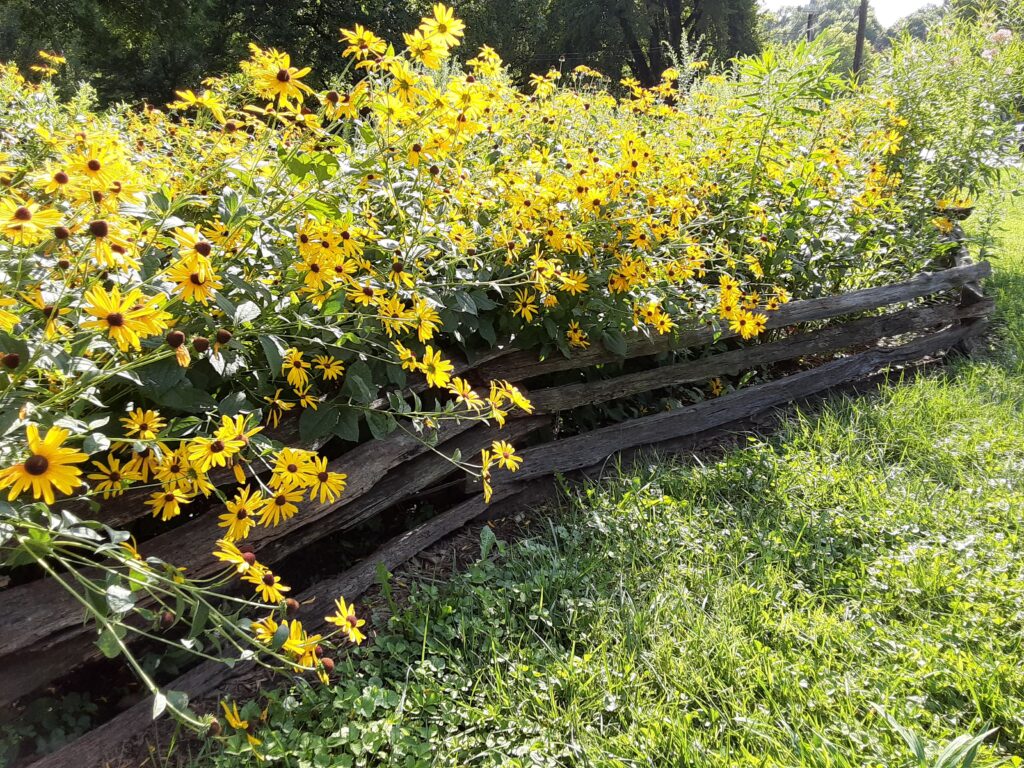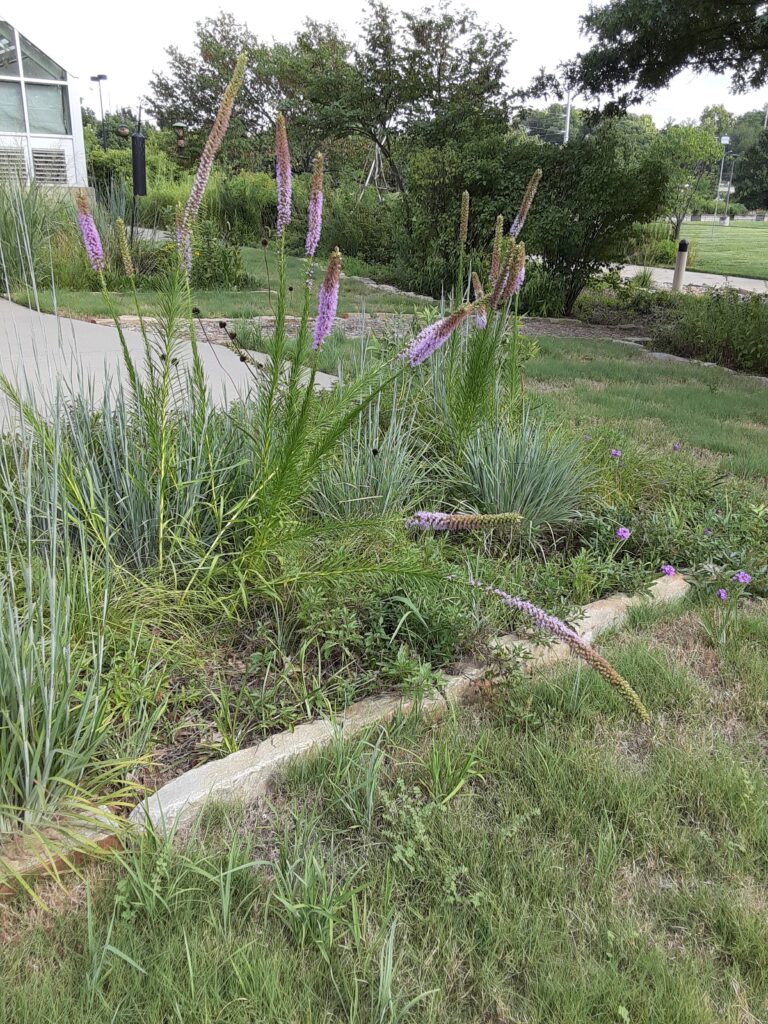I love this idea. These galvanized circles look like a great way to define and control a prairie planting. These are at the Anita B. Gorman Conservation Discovery Center.

A few years ago I attended an information session here co-sponsored by the Kansas City Native Plant Initiative (now Deep Roots) about landscaping with native plants. I was already receptive to their arguments. Plants adapted to our climate that require little extra water or fertilizer and support birds and butterflies—who wouldn’t want to use those? Also, I was tired of watching my plants die. I walked out of the auditorium and have never bought another annual.
For Mother’s Day that year I received four common milkweed plants, and our story changed.
At the information session, I remember the speaker cautioned that neighbors might not “see the value” in native plantings. (When I showed a friend what was going on in my yard, she called it “gardening with weeds.”) The speaker recommended enclosing plantings with a border or edge to lend the beds definition and show intent. Logical choices could be natural materials like limestone, or split cedar rails that put one in mind of prairie farms, like these at the Shawnee Indian Mission.


Some beds at the Gorman Center have limestone edging.
Of course, I decided to use neither of these. I like shaggy—but I think our plantings are too shaggy. Most of what I read say common milkwood grow to four feet, but ours grew to six. Now there’s an error of scale. The plants in the bed shouldn’t be taller than the bed’s width. They should be about half as tall as the bed width.
I’m going to enlarge the bed.